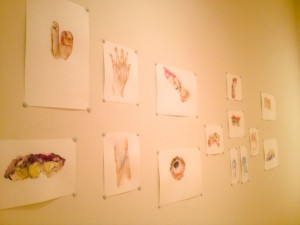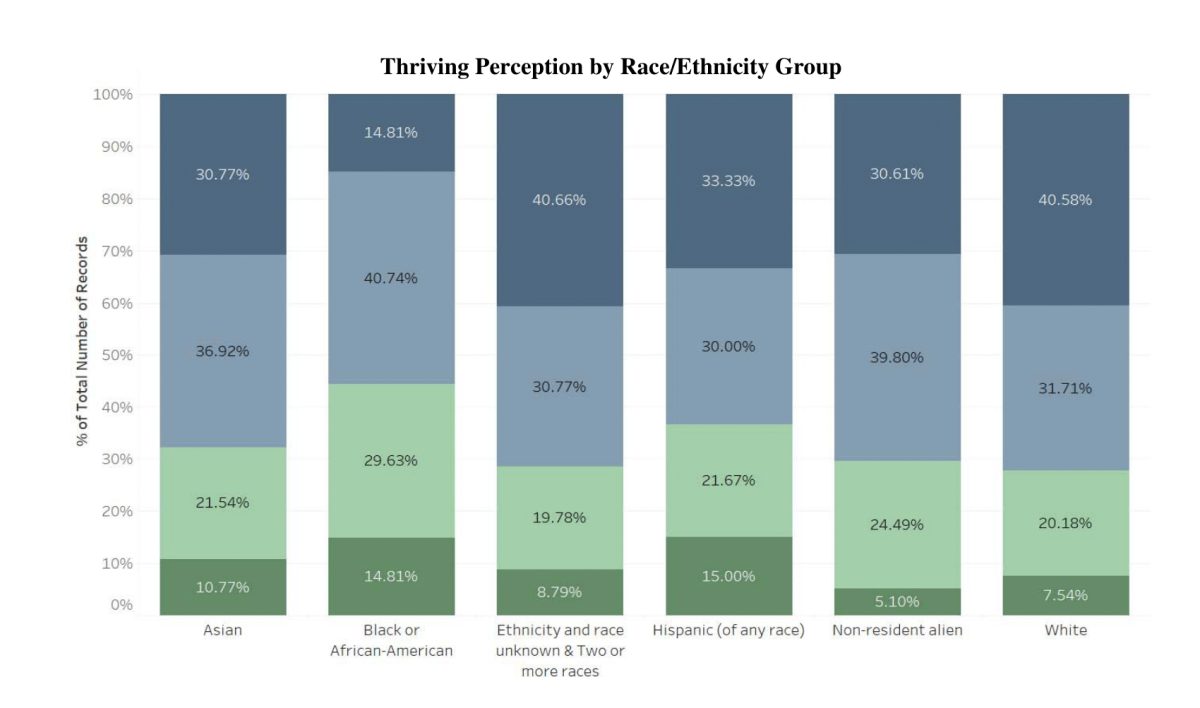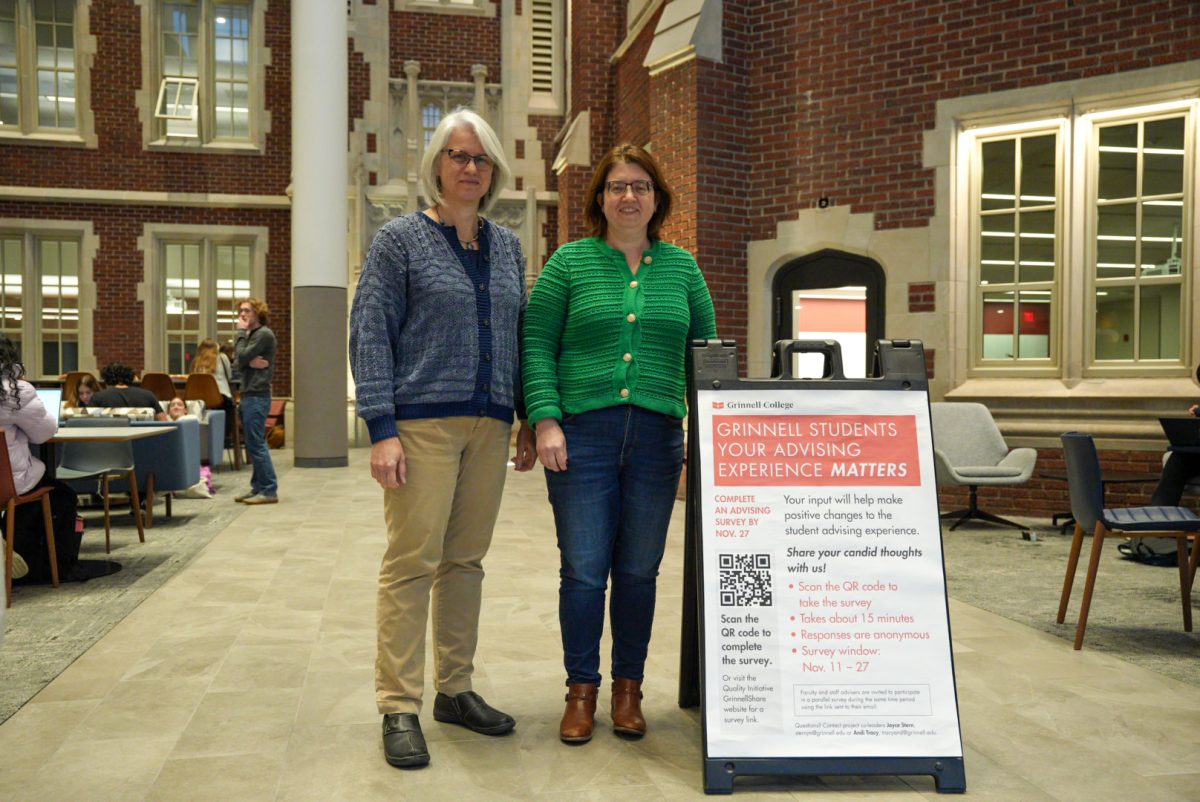Susanna Moller ’12 opened her first show in Smith Gallery this Monday, April 16. I ran into her as she was applying the large, Optima text of her name and the title of her exhibit, Painted Decay, to the Smith gallery wall. In response to what the title of her show meant, it seemed she was going for a name that would not stretch suggestion. It was going to be straightforward.

“I wanted something literal,” Moller said, “not anything with a word that any opinion in it. Decay is what it is and it is Painted.”
Moller’s prelude is an accurate description of the exhibition. Her show is comprised of a gallery of teeth and other body parts painted with watercolors and several molds of teeth pinned to the wall. I asked Moller if she based the paintings off of the teeth molds. She explained that she doesn’t draw directly from real life; an image forms in her mind of what she wants to paint, and then she paints that.
“A lot of the teeth were made up,” she said. “It wasn’t really supposed to be anyone’s mouth, they were just teeth.”
Each painting includes a body part: the roof of a mouth, two toes of a foot, a hand. The digits float freely, unattached to any bodily companion.
“It was a way to paint a part of our bodies without a personality attached to it,” Moller said.
Other artists draw directly from a picture or live model, but Moller’s exhibit doesn’t focus on concrete images, rather the visceral, even dislocated visual impact of an injury or sore.
With watercolors, Moller layered color to develop almost fantastical sets of teeth. They appear like floating landscapes. Purple, brown, and white blend together in a way that makes the teeth look otherworldly, yet strangely familiar.
“I think a lot of them were fantasy, flying in the middle of the page,” Moller said. “They have texture, like dirt. They didn’t look realistic because it was so much fun to use different colors.”
All of the paintings run within the same vein of discolor and decay. One painting depicts an eyeball with cobalt irises. Normally, an eye like that would be picturesque. But this eye hums with the same colorful injury as the other works. It encompasses the mood of Moller’s exhibit, glowing painfully.
“Nearly every part of the body is used in expression. Teeth can be gross, but I think they’re still really expressive. Flaws are expressive.”





















































